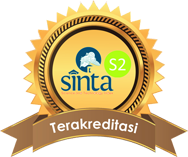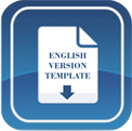Chemical Literacy Skill of High School Students on the Solution Chemistry
DOI:
https://doi.org/10.15575/jtk.v6i1.10392Keywords:
chemical literacy, chemical literacy test, solution chemistryAbstract
This research aimed to develop a multiple-choice chemical literacy test on solution chemistry as an instrument that specifically focuses on learners' knowledge and competency aspects; applying the test instrument by surveying 12th-grade high school students. The development of the test instrument adapted the R&D model by Borg and Gall. The Cronbach's Alpha reliability of the test was obtained after small-scale and wide-scale trials are 0.793 and 0.833, respectively, with 35 valid items. Data were collected using random cluster sampling with a total of 463 respondents. The result shows that the mean score of chemical literacy for the students in this study is 46.27. This indicated that the students' level of chemical literacy is low, and further improvement is required. Â
References
Ad’hiya, E., & Laksono, E. W. (2018). Development and validation of an integrated assessment instrument to assess students’ analytical thinking skills in chemical literacy. International Journal of Instruction, 11(4), 241-256. https://doi.org/10.12973/iji.2018.11416a
Arikunto, S. (2012). Dasar-dasar evaluasi pendidikan edisi 2. Jakarta: PT Bumi Aksara.
Benjamin, T. E., Marks, B., Demetrikopoulos, M. K., Rose, J., Pollard, E., Thomas, A., et. al. (2015). Development and validation of scientific literacy scale for college preparedness in STEM with freshman from diverse institutions. International Journal of Science and Mathematics Education, 15(4), 607-623. https://doi.org/10.1007/s10763-015-9710-x
Borg & Gall. (1983). Educational research: An introduction. New York and London: Longman Inc.
Bossér, U., Lundin, M., Lindahl, M., & Linder, C. (2015). Challenges faced by teachers implementing socio-scientific issues as core elements in their classroom practices. European Journal of Science and Mathematics Education, 3(2), 159-176. Retrieved from https://files.eric.ed.gov/fulltext/EJ1107835.pdf
Celik, S. (2014). Chemical literacy levels of science and mathematics teacher candidates. Australian Journal of Teacher Education, 39(1), 1-15. http:// dx.doi.org/10.14221/ajte.2014v39n1.5
Cigdemoglu, C., & Geban, O. (2015). Improving students’ chemical literacy levels on thermochemical and thermodynamics concepts through a context-based approach. Chemistry Education Research and Practice, 16(2), 302-317. https://doi.org/10.1039/C5RP00007F
Cigdemoglu, C., Arslan, H.O., & Cam, A. (2017). Argumentation to foster pre-service science teachers’ knowledge, competency, and attitude on the domains of chemical literacy of acids and bases. Chemistry Education Research and Practice, 18(2), 288-303. https://doi.org/10.1039/C6RP00167J
Demir, E. (2016). Characteristics of 15-year-old students predicting scientific literacy skills in Turkey. International Education Studies, 9(4), 99-107. https://doi.org/10.5539/ies.v9n4p99
Ding, L., & Beichner, R. (2009). Approaches to data analysis of multiple-choice questions. Physical Review Physics Education Research, 5(2), Article 020103. https://doi.org/10.1103/PhysRevSTPER.5.020103
Dragos, V., & Mih, V. (2015). Scientific literacy in school. Procedia - Social and Behavioral Sciences, 209, 167-172, https://doi.org/10.1016/j.sbspro.2015.11.273
Fives, H., Huebner, W., Birnbaum, A. S., & Nicolich, M. (2014). Developing a measure of scientific literacy for middle school students. Sciences Education, 98(4), 549-580. https://doi.org/10.1002/sce.21115
Huann-shyang, L., Zuway-R. Hong & Tai-Chu, H. (2012). The role of emotional factors in building public scientific literacy and engagement with science. International Journal of Science Education, 34(1), 25-42. https://doi.org/10.1080/09500693.2010.551430
Karademir, E., & Ulucinar, U. (2017). Examining the relationship between middle school students’ critical reading skills, science literacy skills and attitudes: A structural equation modeling. Journal of Education in Science, Environment and Health, 3(1), 29-39. https://doi.org/10.21891/jeseh.275669
Kemdikbud. (2016a). Permendikbud No. 22 Tahun 2016 tentang Standar Proses Pendidikan Dasar dan Menengah. Jakarta: Depdiknas.
Kemdikbud. (2016b). Permendikbud No. 24 Tahun 2016 tentang Kompetensi Inti dan Kompetensi Dasar Pelajaran pada Kurikulum 2013. Jakarta: Depdiknas.
Muntholib, Mayangsari, J., Pratiwi, Y. N., Muchson, Joharmawan, R., Yahmin, & Rahayu, S. (2018). Development of simple multiple-choice diagnostic test of acid-base concepts to identify students’ alternative conceptions. Proceedings of the 1st Annual Internasional Conference on Mathematics, Science, and Education (IcoMSe 2017), 218, 251-268. https://doi.org/10.2991/icomse-17.2018.45
Muntholib. (2018). Efektivitas scientific inquiry-based lecturing dalam meningkatkan literasi kimia dan views about scientific inquiry mahasiswa kimia. Disertasi, Fakultas Matematika dan Ilmu Pengetahuan Alam: Universitas Negeri Malang.
Muntholib, Ibnu, H., Rahayu, S., Fajaroh, F., Kusairi., & Kuswandi, B. (2020). Chemical literacy: Performance of first year chemistry students on chemical kinetics. Indonesian Journal of Chemistry, 20(2), 468-482. https://doi.org/10.22146/ijc.43651
Mutlu, A., & Sesen, B. A. (2015). Development of a two-tier diagnostic test to assess undergraduates’ understanding of some chemistry concepts. Procedia - Social and Behavioral Sciences, 174, 629-635. https://doi.org/10.1016/j.sbspro.2015.01.593
Nahadi, F. H., & Ulum, M. (2018). Development and validation of reasoning-based multiple-choice test for measuring the mastery of chemistry. Journal of Engineering Science and Technology, 13(6), 1476-1488. https://doi.org/10.1063/1.4983989
Nurjananto, N., & Kusumo, E. (2015). Pengembangan instrumen penilaian autentik untuk mengukur kompetensi peserta didik materi senyawa hidrokarbon [Development of authentic assessment instruments to measure student competencies of hydrocarbon compounds]. Jurnal Inovasi Pendidikan Kimia, 9(2), 1575-1584. Retrieved from https://journal.unnes.ac.id/nju/index.php/JIPK/article/view/4825/3993
Organization for Economic Co-operation and Development (OECD). (2015). PISA 2015: Draft Science Framework. Paris: OECD Publishing.
Organization for Economic Co-operation and Development (OECD). (2016). PISA 2015 Assessment and Analytical Framework: Science, Reading, Mathematics, and Financial Literacy. Paris: OECD Publishing.
Organization for Economic Co-operation and Development (OECD). (2018). PISA 2018: Database. Paris: OECD Publishing.
Rahayu, S. (2017). Promoting the 21st century scientific literacy skills through innovative chemistry instruction. AIP Conference Proceedings, 1911(1), 020025. https://doi.org/10.1063/1.5016018
Rahayu, S., Treagust, D. F., Chandrasegaran, A. L., Kita, M., & Ibnu, S. (2011). Assessment of electrochemical concepts: a comparative study involving senior high school students in Indonesia and Japan. Research in Science and Technological Education, 29(2), 169-188. https://doi.org/10.1080/02635143.2010.536949
Sadhu, S., & Laksono, E. W. (2018). Development and validation of an integrated assessment for measuring critical thinking and chemical literacy in chemical equilibrium. International Journal of Instruction, 11(3), 557-572. http://dx.doi.org/10.12973/iji.2018.11338a
Shwartz, Y., Benâ€Zvi, R., & Hofstein, A. (2006). Chemical literacy: What does this mean to scientist and school teacher? Journal of Chemical Education, 83(10), 1557-1561. https://doi.org/10.1021/ed083p1557
Shwartz, Y., Benâ€Zvi, R., & Hofstein, A. (2006). The importance of involving highâ€school chemistry teachers in the process of defining the operational meaning of “Chemical Literacyâ€. International Journal of Science Education, 27(3), 323-344. https://doi.org/10.1080/0950069042000266191
Thahjadarmawan, E. (2018). Pithy of chemistry: HOTS. Yogyakarta: Parama Ilmu.
Thummathong, R., & Thathong, K. (2018). Chemical literacy levels of engineering students in Northeastern Thailand. Kasetsart Journal of Social Sciences, 39(3), 478-487. https://doi.org/10.1016/j.kjss.2018.06.009
Triyani, R. & Azizah, U. (2020). Training of science literacy skills in chemical equilibrium through implementation guided inquiry learning. Jurnal Tadris Kimiya, 5(1), 35-47. https://doi.org/10.15575/jtk.v5i1.7550
Vieira, R. M., & Vieira, C. T. (2014). Fostering scientific literacy and critical thinking in elementary science education. International Journal of Science and Mathematics Education, 14, 659-680. https://doi.org/10.1007/s10763-014-9605-2
Wattanakasiwich, P., Taleab, P., Sharma, M. D., & Johnston, I. D. (2013). Development and implementation of a conceptual survey in thermodynamics. International Journal Innovation Science and Mathematics Education, 21(1), 29-53. Retrieved from https://openjournals.library.sydney.edu.au/index.php/CAL/article/viewFile/6459/7493
Wuttiprom, S., Sharma, M. D., Johnston, I. D., Chitaree, R., & Soankwan, C. (2009). Development and use of a conceptual survey in introductory quantum physics. International Journal of Science Education, 31(5), 631-654. https://doi.org/10.1080/09500690701747226
Yustin, D. L., & Wiyarsi, A. (2019). Students’ chemical literacy: A study in chemical bonding. Journal of Physics: Conference Series, 1397, 012036. https://doi.org/10.1088/1742-6596/1397/1/012036
Downloads
Published
How to Cite
Issue
Section
Citation Check
License
Authors who publish with this journal agree to the following terms:
- Authors retain copyright and grant the journal right of first publication with the work simultaneously licensed under a Creative Commons Attribution-ShareAlike that allows others to share the work with an acknowledgement of the work's authorship and initial publication in this journal.
- Authors are able to enter into separate, additional contractual arrangements for the non-exclusive distribution of the journal's published version of the work (e.g., post it to an institutional repository or publish it in a book), with an acknowledgement of its initial publication in this journal.
- Authors are permitted and encouraged to post their work online (e.g., in institutional repositories or on their website) prior to and during the submission process, as it can lead to productive exchanges, as well as earlier and greater citation of published work (See The Effect of Open Access).








